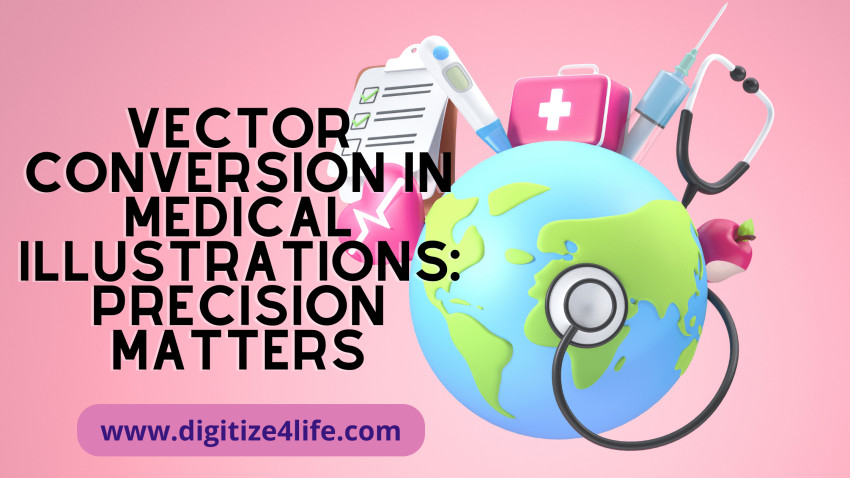
Blog Title: Medical Illustrations: Vector Conversion: Accuracy Counts
Overview
In the ever-changing world of medical images, accuracy is critical. Accuracy is typically a prerequisite for visualizing medical topics that is difficult to do with standard visuals. This is when vector conversion becomes a revolutionary technique. We shall examine the importance of vector conversion in medical graphics in this blog post, outlining some of its uses and advantages.
Comprehending Vector Conversion
Vector Conversion: What is It?
The technique of converting raster images into scalable vector graphics (SVG) is known as vector conversion. Vectors employ mathematical formulas to generate forms, as opposed to pixel-based graphics, therefore the visual quality is preserved at all sizes. This is especially important for medical images because every detail counts.
Why Accuracy Is Important for Medical Illustrations?
In medical images, accuracy is a must. Misunderstandings or incorrect diagnoses can result from even a little misstatement. Medical experts can clearly convey complex information by using graphics created with razor-sharp quality thanks to vector conversion.
Advantages of Vector Conversion for Illustrations in Medicine
The ability to scale
Scalability is one of the main benefits of vector conversion. Resizing medical images is frequently necessary for a variety of applications, including publications, presentations, and teaching resources. Scaling up or down a vector image doesn't affect its clarity, therefore every detail is preserved.
Clarity and Detail
When it comes to medical graphics, precision is crucial. Images are sharper and more detailed after being converted to vector format, which adds a precision that is essential for explaining complex anatomical structures or surgical techniques.
Changeable Components
Vector graphics are made up of easily editable individual pieces as opposed to raster images. This capability, which permits the alteration of particular aspects without sacrificing the image's overall integrity, is extremely helpful for medical illustrations.
Vector Conversion Applications in Medicine and Medical Education
Medical images that have been turned to vectors are frequently used in instructional materials. The accuracy provided by vector graphics guarantees that students obtain accurate visual information in textbooks and online courses alike.
Publications for Medicine
Vector graphics are particularly useful in scientific and medical publications, where space is sometimes at a premium. They make it possible to include intricate illustrations without compromising quality or growing the size of the files.
Patient-Related Information
It might be difficult to explain medical procedures or conditions to people. Illustrations that have been turned to vectors make this procedure simpler by offering patient comprehension through unambiguous graphics.
Problems and Solutions
Conversion's Complexity
Although there are many advantages to vector conversion, the procedure can be challenging, particularly for sophisticated medical images. But these difficulties can be overcome with the right personnel and software developments, guaranteeing a smooth conversion procedure.
Selecting the Appropriate Instruments
It's important to choose the right vector conversion tools. This blog will offer information on some of the top software solutions out there, helping medical illustrators and professionals make wise decisions.
In conclusion, precision has been redefined.
Precision is now required in the rapidly changing field of medical graphics, not just preferred. A potent tool that redefines the visual communication of medical information is vector conversion. The advantages of vector graphics precision, from improved scalability to flawless detail, are revolutionizing how we view and comprehend medical drawings.
Accept the precision revolution by upgrading the visual language of healthcare with vector conversion for your medical images.




